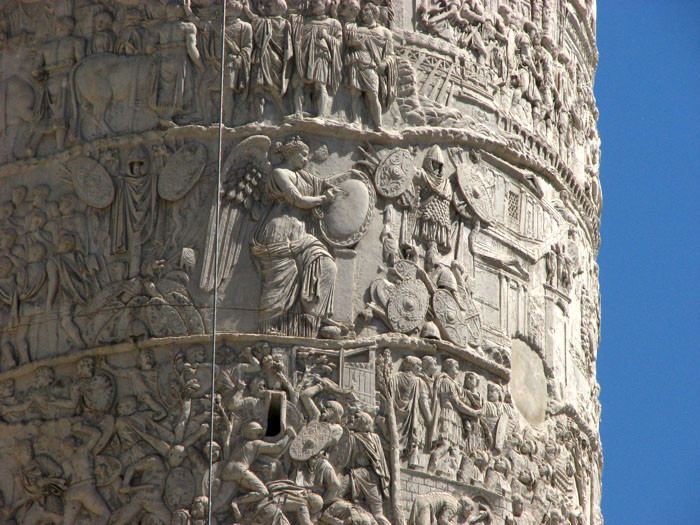Trajan's Column sheds light on women's role in ancient Roman army

A 2,000-year-old monument has shed new light on the lives of Roman soldiers, suggesting women had a far larger role in military life than previously believed.
Archaeologist Elizabeth Greene, from the University of Western Ontario, has analysed the images on Trajan's Column in Rome – a 35 metre-high tribute to the Roman emperor Trajan's victory in the Dacian Wars.
The structure, dating to 113 AD, was built at a time in Roman history when soldiers were banned from marrying.
Roman Emperor Augustus passed a law banning soldiers from marrying – a rule that remained in force for almost 200 years. While it is not clear why the ban was instilled, it has been suggested that the defeat at the Battle of the Teutoburg Forest, in part, sparked the change.
When the Germanic forces started their attack, many soldiers went to rescue their wives and children instead of fighting - Cassius Dio wrote that the women and children called to the soldiers to return to them during the battle. It is estimated that around 20,000 Romans were killed.
Augustus also wanted to keep the army mobile and reduce costs – he did not want to subsidise families through military pay.
However, Greene, presenting her findings at the annual meeting of the Archaeological Institute of America in New Orleans, said Trajan's Column depicts six females – believed to be wives and daughters - taking part in triumphal ceremonies.
According to New Scientist, the figures are holding sacrificial offerings at a religious military ceremony – roles normally undertaken by boys. The six figures are clearly women or girls and Greene believes they depict the wives or daughters of senior officers.

There is little literature about women in the Roman army, leading to the widespread belief that women had no place military life. However, a growing body of evidence – including Greene's latest finding – is slowly challenging these long-held assumptions.
In the late 1980s and 90s, Lindsay Allason-Jones of the University of Newcastle and Carol van Driel-Murray of the University of Leiden found shoes in women and children's sizes at the site of a Roman fort along Hadrian's wall, suggesting they lived there with the soldiers.
Greene has now looked back at this evidence and found that 40% of the shoes at the site belonged to women or children, while 43% of 1,000 diplomas found mention of wives or children. She believes they likely lived just outside the fort as families, with women working as cooks, seamstresses or washerwomen.
Penelope Allison, the University of Leicester, also found evidence from a site in Germany that suggested women lived inside the forts: "They just lived in the barracks with everybody else, engaging with the military community."
Van Driel-Murray, however, said there is still a way to go if historical texts are to be rewritten: "I'm still trying to convince the older generation, mostly classical scholars and historians, who have problems with these forts being mixed communities."
© Copyright IBTimes 2025. All rights reserved.






















